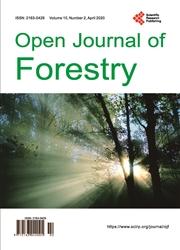Effects of Inhabiting and Life Patterns on the UV Spectral Properties of Small Mammalian Herbivores’ Urine
引用次数: 0
Abstract
It is well known that avian predators can use prey excretions such as urine and feces to track their prey, and the urine and feces of small mammalian herbivores can reflect ultraviolet (UV) light and emit fluorescent light. There are still some debates as to whether UV visibility of small mammalian herbivores’ urine is used as a hunting cue by avian raptors. Some studies in Europe have demonstrated that diurnal raptors are capable of utilizing these cues to target key prey species. However, researchers in Australia have argued that raptors do not use the UV visibility of urine while hunting. To our knowledge, there are no reports from Asia concerning the ultraviolet spectral characteristics of small mammal herbivores’ urine. This study examined the UV spectral properties of urine from 6 small mammal herbivores species by comparing the UV reflectance and fluorescence spectra of urine from small mammalian herbivores living in plateau meadows, plateau shrubs, open marshland, farmland, and semi-desert grassland in China. In addition, we compared the UV spectral properties of urine from ground-dwelling species of rodents and subterranean species to determine whether ultraviolet visibility of small mammal herbivores’ urine could be used as a visual signal by Asian vole-eating raptors. The results showed that: 1) the SC 370 values of urine from four small mammal herbivores species were ordered as plateau pika (plateau meadow) > root voles (plateau bush) > reed voles (swampland) > Brandt’s vole (desert grassland); and 2) UV fluorescence peak intensity and the wavelengths of urine from ground-dwelling species (such as the root vole, plateau pika, or Brandt’s vole) were significantly higher than those of栖息和生活方式对小型食草哺乳动物尿液紫外光谱特性的影响
众所周知,鸟类捕食者可以利用猎物的尿液和粪便等排泄物来追踪猎物,而小型食草哺乳动物的尿液和粪便可以反射紫外线(UV)并发出荧光。关于小型食草哺乳动物尿液的紫外线可见度是否被鸟类猛禽用作狩猎线索,仍然存在一些争论。欧洲的一些研究表明,昼行性猛禽能够利用这些线索来瞄准主要的猎物物种。然而,澳大利亚的研究人员认为,迅猛龙在捕猎时并不利用尿液的紫外线可见度。据我们所知,亚洲尚未有关于小型食草哺乳动物尿液紫外光谱特征的报道。本研究通过比较6种小型食草动物尿液的紫外光谱和荧光光谱,研究了6种食草动物尿液的紫外光谱特性。这些动物分别生活在中国高原草甸、高原灌木、开阔沼泽地、农田和半荒漠草原。此外,我们还比较了地面啮齿类动物和地下啮齿类动物尿液的紫外光谱特性,以确定小型食草哺乳动物尿液的紫外可见性是否可以作为亚洲食田鼠猛禽的视觉信号。结果表明:1)4种小型草食性哺乳动物尿液sc370值排序为高原鼠兔(高原草甸)>根田鼠(高原灌木)>芦苇田鼠(沼泽)>布氏田鼠(荒漠草原);2)地栖物种(如根田鼠、高原鼠兔、布氏田鼠)尿液的紫外荧光峰强度和波长均显著高于地栖物种
本文章由计算机程序翻译,如有差异,请以英文原文为准。
求助全文
约1分钟内获得全文
求助全文

 求助内容:
求助内容: 应助结果提醒方式:
应助结果提醒方式:


